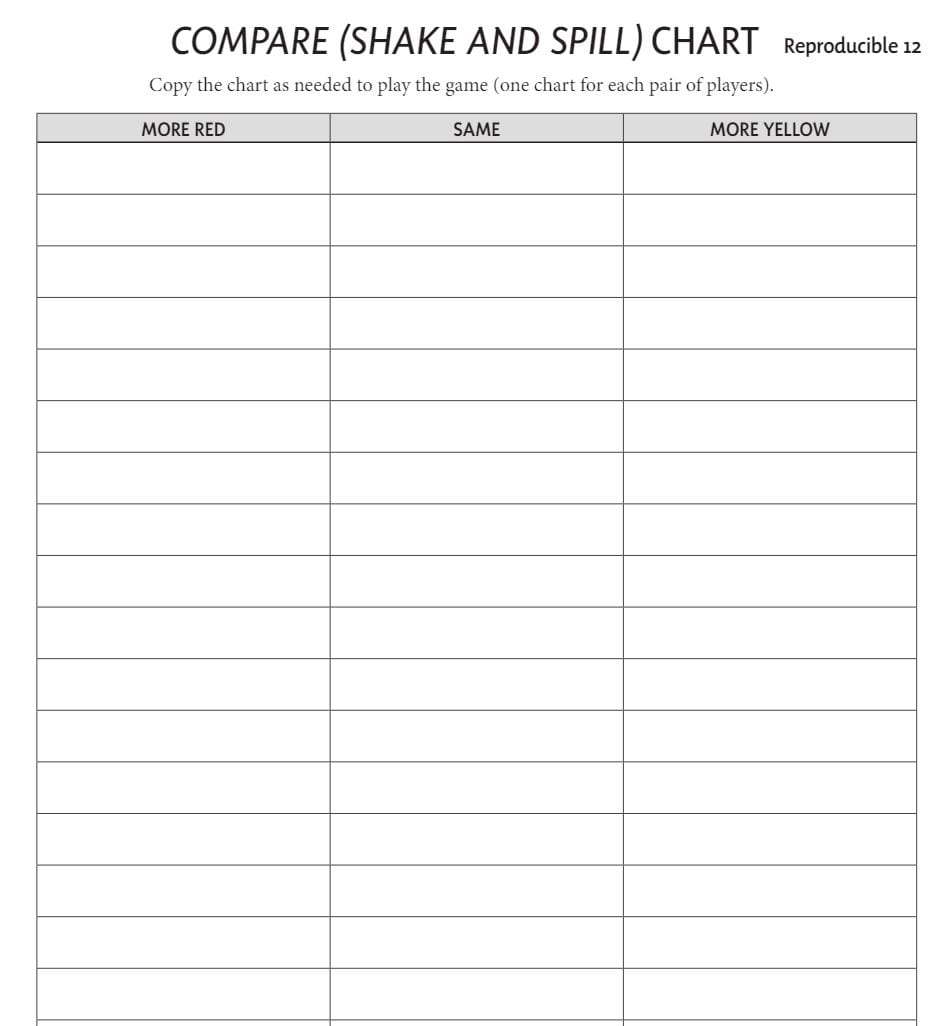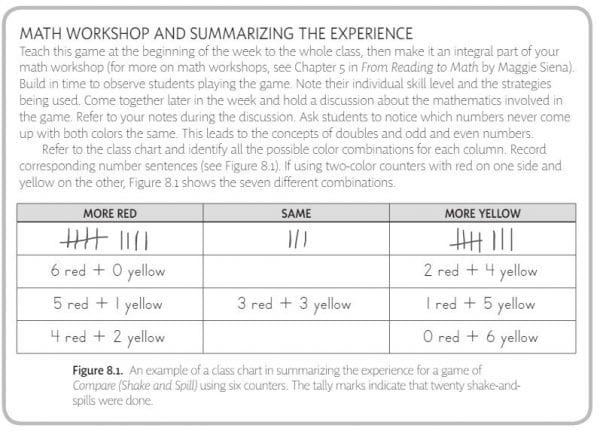First grade is the beginning of exposing students to mathematics. Counting, comparing, and grouping, as well as learning the comparison symbols <, =,>, are key foundations in building a mathematical mindset. Try this game with your students, and give them a chance to practice comparing counters with a partner as they take turns shaking and spilling a select group of color-counters. After each turn, students will record the number of counters, how many were color x, and color y, or if they were the same amount.
(Note: If your students have not yet learned how to use and bundle tally marks, this is the perfect opportunity.)
This game will also pave the way for writing number sentences, interpreting mathematical word problems, and organizing and interpreting data symbolically.
Materials
- two-color counters, 10 per student
- pencil, 1 per pair of students
- Compare (Shake and Spill) Chart (Figure 1 chart), enlarged for class use
- Compare (Shake and Spill) Chart (Figure 1 chart), 1 per pair of students
Directions
Part 1: Show the class
- Begin my explaining to students that they will play the game Compare with a partner, and counting two-color counters.
- This chart (fig. 1) should be printed large enough for students to see (or written on the board.)
- Show students the counters, and select a volunteer. Place the counters in the students’ hands, and show them how to cup and shake them, count to three while shaking, and aim for a specific spot to spill the counters.
- After the student spills the counters, advise the class not to touch the counters, but to observe them. Ask: “Are there more red, more yellow, or the same?” Place a tally mark on the chart, showing the results. Repeat this step as needed, until you and the class feel comfortable and understand the game.
Part 2: Class play
- When you give the student their own recording charts (fig. 1), instruct students to take turns shaking and spilling the counters. Advise them,” One person will shake and spill. Both will agree on the results. The other person will place the tally on the chart. Alternate turns.”
- After students have a reasonable amount to play the game, bring them back together.
Part 3: Independent play
- Set up students for independent practice, supplying ten counters, a pencil, and the Compare chart.
- Students may decide whether they would like to use 6,7,8, 9, or 10 counters
- Observe and talk with students as they play. When playing with ten counters, ask key questions to help students recognize that two odd numbers make an even and two even numbers make an even.
- Students should play twenty rounds with each group of counters before selecting a new number of counters.
Jamee Petersen, a teacher of multiage children in suburban Minneapolis, has more than twenty years of classroom experience. She is an educational consultant in Minnesota at the local, state, and national levels and has served as a Math Solutions consultant. This blog has been adapted from Jamee’s Math Games for Number and Operations and Algebraic Thinking, Grades K–5.

 All Blog Posts
All Blog Posts


Comments